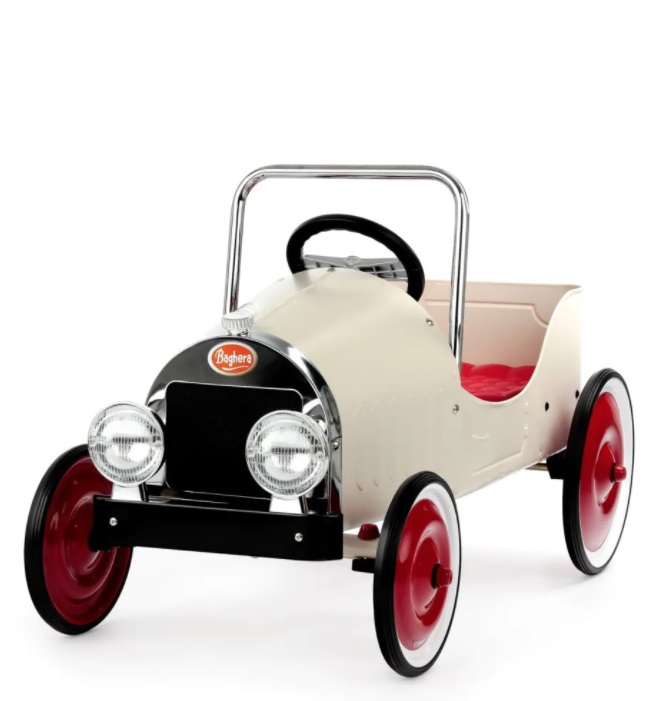Handy Reasons To Selecting Electric Kids Cars
Wiki Article
What Do I Need To Be Aware Of About The Battery's Life And Charging Time Of An Electric Kid Ride-On Car?
Understanding the battery's time and life of an electric kid's car is essential to ensure that your child is able to have an enjoyable and safe journey. Here's everything you need to be aware of - Battery type -
Most electric ride-on cars for kids utilize rechargeable batteries, which are typically lithium-ion or lead-acid batteries. Lead-acid batteries take longer to charge and also have less battery life.
Battery Capacity
The battery capacity is expressed in ampere hours (Ah) and Watt hours (Wh). This determines how long a ride-on can run with a single charge. Higher capacity batteries provide longer playing time before requiring recharge.
Run Time -
The time it takes to run the electric ride-on car is referred to how long it can continue to operate on a single charge. It can differ based on a variety of factors, including battery capacity, motor power, terrain, as well as the weight of the driver.
The typical electric ride-on car run times range between 30 minutes to 2 hours per charge. However, some batteries that have large capacity could have longer durations.
Charging Time
Charging time is the amount of time it takes for batteries to be fully recharged after it has been exhausted. Charge times can vary according to battery capacity or charger specifications.
In general, the charging time for an electric ride-on vehicle is between 8 to 12 hours. Certain models can charge faster rates, particularly those using lithium ion batteries.
The battery's longevity and safety can be ensured by following the manufacturer’s charging instructions. The battery's performance may be negatively affected if the battery has been charged too high or is undercharged.
Charge Methods -
Electric ride on vehicles typically come with chargers that plug into a regular home outlet. Some models come with rapid charging features or smart chargers that analyzes the condition of the battery and adjusts the charging rate accordingly.
To ensure that the battery is not damaged or damage to electrical systems, ensure the charger in the ride-on car is compatible with the charging port.
Additional Batteries
Certain electric ride-on vehicles might allow you to purchase extra batteries or spares for a longer time of play. If you have spare batteries on-hand, you can easily swap out depleted ones to fully charged ones in order to cut down on the time between repairs.
Knowing the battery's life and charging times of an electric ride-on children car is a guarantee your child will enjoy uninterrupted playtime and fun adventures while exploring their surroundings. It is crucial to recharge the battery as frequently as is possible and follow the proper charging procedures. This will increase the battery's performance. Follow the top rated Mercedes ride on car for site info including toy a car, electric ride on, riding digger, toy the car, 2 seater electric cars, car toy toy, toy with car, 2 seater electric cars, car on ride, 2 seater electric cars and more. .

What Is The Difference Between Indoor And Outdoor Versions Of Children's Vehicles Designed?
The specifications of models for indoor and outdoor use differ. Here are a few different features of these cars Indoor Use Cars
Dimensions and weight- Cars made for indoor use will be smaller in dimensions and weight and therefore easier to maneuver around tight spaces. This includes playrooms and living spaces. They're compact enough to fit through tight corners and narrow passageways without causing damage to furniture or walls.
Low Ground Clarity Vehicles in indoor environments have low clearances to prevent them getting stuck, or getting caught, on obstacles, such as carpets, rugs or thresholds. This enables the vehicle to move easily and uninterrupted across indoor surfaces, with no risk of it getting stuck or falling over.
Smooth Wheels- Indoor use cars' wheels are typically composed of smooth materials like plastic or rubber for the traction of surfaces that have smooth surfaces, such as laminate flooring or tile. They are engineered with a minimum of sound to reduce scratching or scuffing indoor surfaces.
Limit Speed - Vehicles designed to be used indoors usually have smaller maximum speeds to guarantee that they are safe and controlled in tight spaces. This helps prevent accidents or collisions with furniture, walls or other obstacles typically encountered in indoor areas.
Outdoor Use Cars -
Durable Construction: Vehicles made for outdoor use are made of robust materials such as hard plastic or steel that are able to withstand harsh handling, outdoor elements such as humidity and sunlight. They are more resistant to wear and tear caused by exposure to conditions outside.
For use outdoors, vehicles with higher ground clearance can navigate bumps and obstacles outside. They can then navigate rough surfaces like grass, gravel, or pavement without being damaged or snagged.
Traction tires - Tires for outdoor vehicles typically come with treads and patterns that provide greater grip and traction when driving on uneven or slippery surfaces. This gives you stability and control when driving outside, preventing sliding or sliding.
Weather Resistant: Cars designed for outdoor use often feature weather-resistant features like sealed electronics, or casings that are waterproof. They can also make use of the rust-resistant materials to avoid damage from moisture. This allows them to withstand exposure to rain, mud or puddles with no loss of performance.
High-Speed - Vehicles designed for outdoor use have greater speeds as they're designed to handle the wide spaces and distances encountered in the natural world. This may provide an exciting and adventurous riding experience for children that are out in the open.
These features and traits will assist parents in choosing the right kids' car to meet their requirements for use and the environment in which they live. View the recommended go here for remote control childrens cars for more recommendations including digger ride, electric two seater cars, electric two seater cars, toy car for car, toy cars toy car, childrens electric cars, childrens ride on, electric rideons, childs ride on car, ride a toy and more. .

How Do You Determine The Budget For Your Kid's Ride-On Car Purchase?
Be aware of factors such as longevity, durability, financial situation, and features when establishing a budget. Find the best deal to fit your budget by conducting some research into the average price.
It is a good idea to start by researching the price average of rides-on cars for children that have the features you require. Online retailers, toy stores and manufacturers' websites may offer pricing for different models.
Choose Must-Have Feature to Have -
The features you pick will affect the cost of your ride-on car. Features such as real-time headlights, working headlights as well as remote controls for the parents and seat belts may influence the price of a ride-on vehicle.
Prioritize features through comparing your budget to the preferences of your child.
Consider Durability and Longevity.
Look for sturdy ride-ons that are made of high-quality materials such as plastics or metals that can withstand years of use and extreme outdoor conditions.
To get a better understanding of the durability and longevity review the product or ask for the opinions of other parents. The initial cost of a reliable ride-on vehicle will save you money over time by preventing regular repairs and replacements.
Compare prices from various stores Compare prices from different retailers
Check prices from various retailers to determine the most price for your dollars. Compare prices and special deals from department stores, online retailers and specialty stores.
Keep an eye on sales, discounts or clearance sales that can help you save money while not losing quality.
Add the additional cost
Include any other costs you may incur when purchasing the ride-on car for your child. This includes shipping costs and taxes, as well as any additional accessories (e.g. extra batteries, safety equipment).
Budget for the total cost that includes any equipment or maintenance costs.
Make a budget that is realistic -
After researching the options available and evaluating your financial situation, make a budget that reflects your preferences and prioritizes. Consider the features, durability as well as long-term usage in determining the maximum amount you can afford for a ride-on car.
Do not overspend or use your budget to add unneeded features in your child's games.
Think about Long-Term Value
The car that a child rides on should be evaluated in terms durability, versatility and its ability to grow with the child. The value of a model that is high quality and has many features can be higher over time, compared to a less expensive, less durable option.
By setting the budget, and then taking a look at the costs, features as well as durability and long-term performance, you can find the most price for your money when purchasing a ride-on kid's car for your child. Make sure you are budgeting and put the most important features first to ensure your child's safety and happiness. safe. Have a look at the top Lamborghini kids car kidscars.co.uk news for website info including car on ride, race car toy car, pedal car, ride on digger, car toy car toy, remote control childrens electric cars, ride on digger, toy car, childrens ride on, toy and car and more. .
